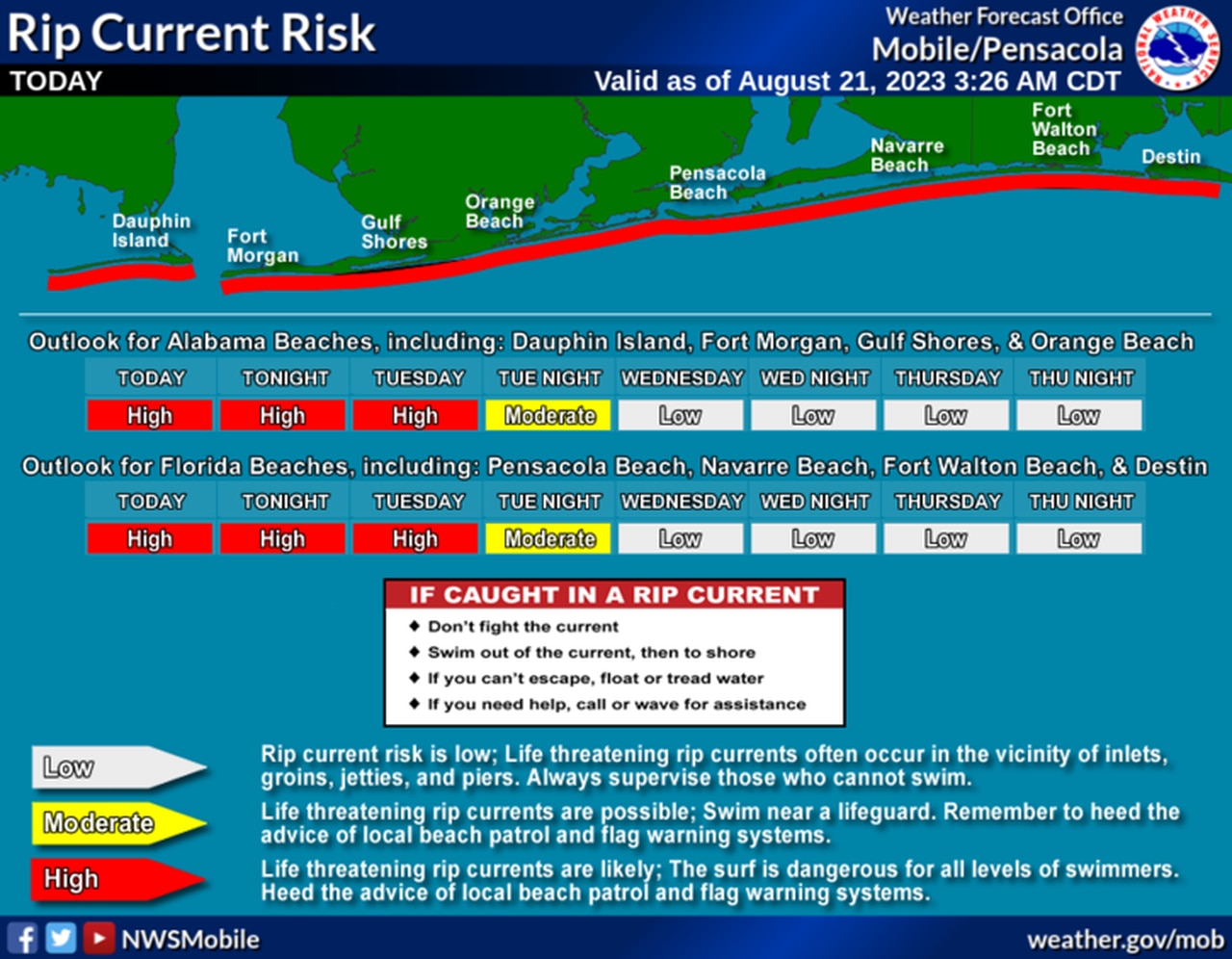Three tropical storms in Atlantic; what about the Gulf?
The tropical Atlantic Ocean was full of tropical storms as of Monday morning. And there may be one or two more to add to the mix before it’s over.
The National Hurricane Center on Monday was issuing advisories on three tropical storms: Emily, Franklin and now Gert. Emily and Gert are no threat to land, but Franklin has prompted tropical storm warnings in Hispaniola and could eventually become a hurricane.
Then there are two other disturbances that don’t have names — yet. And one of them is in the Gulf of Mexico.
That system, Invest 91, was in the eastern Gulf on Monday and on a path westward at 15 to 20 mph. The hurricane center said it could become a tropical depression — or a tropical storm — by Tuesday as it nears the coasts of Texas or Mexico.
Forecasters added that tropical storm watches or warnings may be necessary later today for parts of Texas and northern Mexico.
If the storm gets a name it will be Harold.
The potential Harold is not expected to directly affect Alabama except for raising the rip current risk to high both today and Tuesday. Rip currents are the biggest weather-related killer for the National Weather Service’s offices in Mobile and Tallahassee, Fla.
Here’s the rip current forecast for Alabama and northwest Florida:
There is a high risk of rip currents today through Tuesday along the coast.
Here is a look at the named storms as of Monday:
TROPICAL STORM EMILY
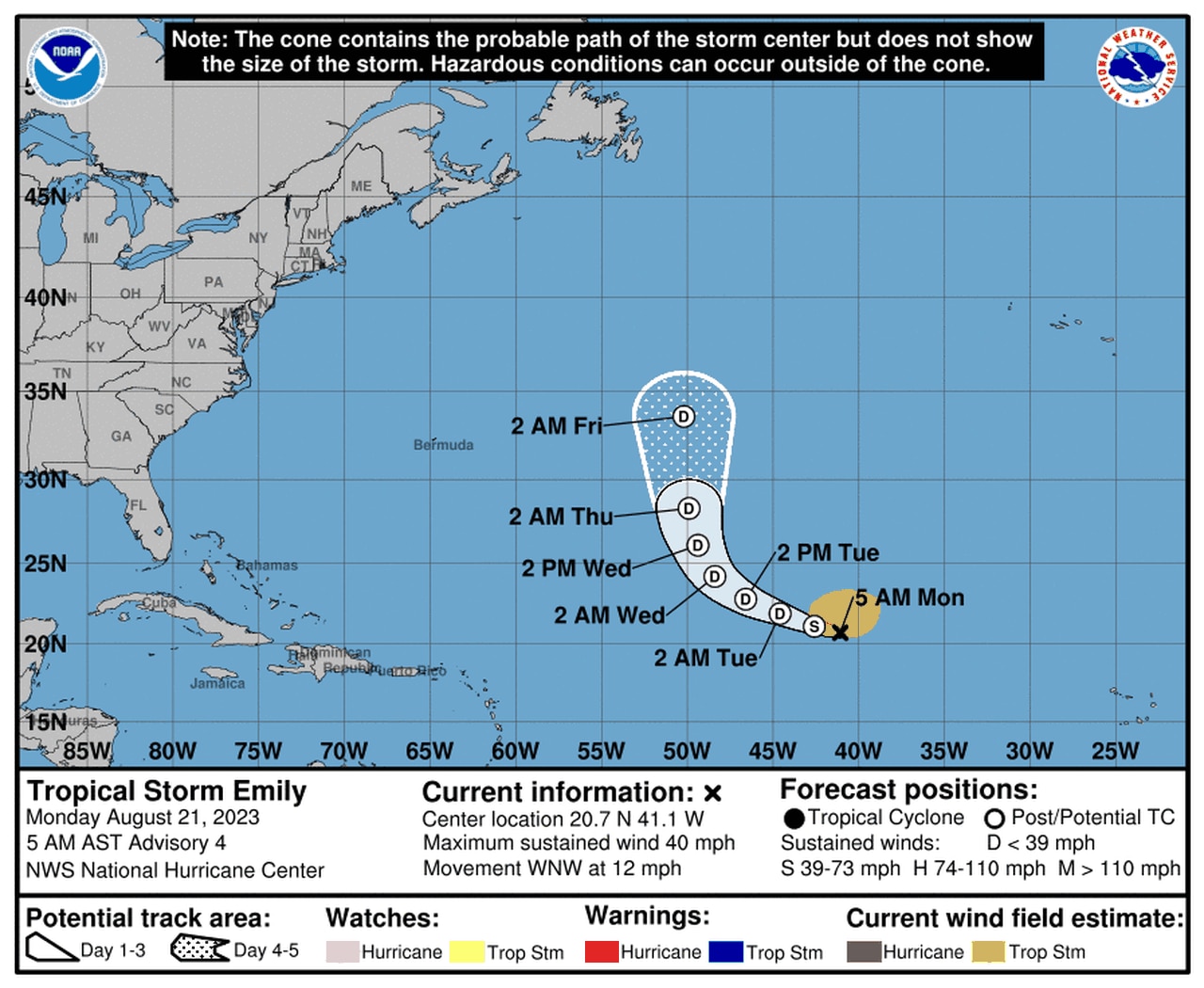
Tropical Storm Emily is expected to stay out at sea and dissipate in a day or two.
Tropical Storm Emily isn’t expected to hang around much longer and is no threat to land.
As of Monday morning Tropical Storm Emily was located about 1,165 miles west-northwest of the Cabo Verde Islands and was tracking to the west-northwest at 12 mph.
Emily had sustained winds of 40 mph, down from 50 mph over the weekend.
The hurricane center said more weakening is expected, and Emily could become a post-tropical storm by tonight.
TROPICAL STORM FRANKLIN
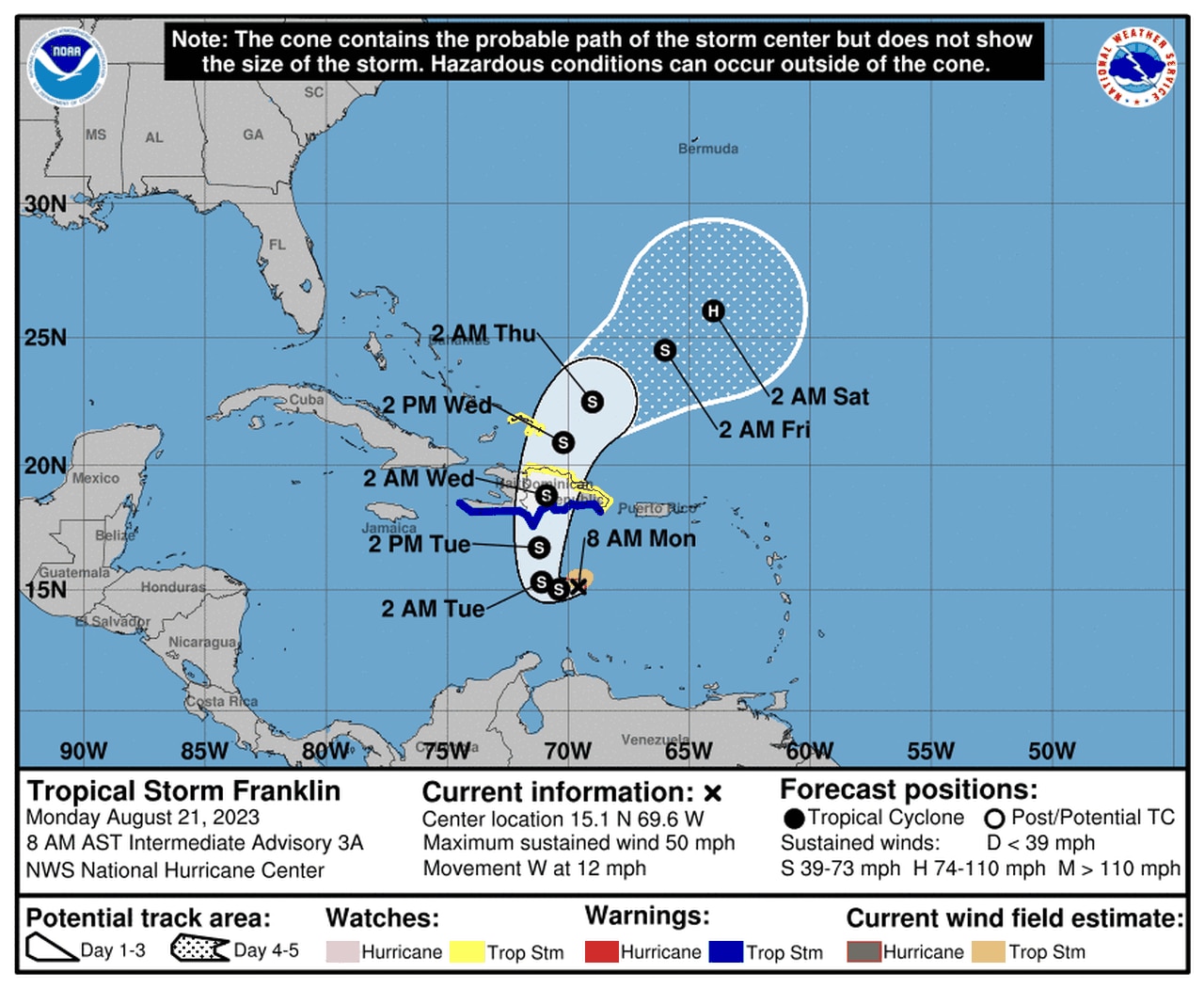
Franklin could cross over Hispaniola as a tropical storm.
Tropical Storm Franklin could bring heavy rain to Hispaniola and become a hurricane later this week. However, the storm is not expected to threaten the continental U.S. and will instead head out to sea after crossing over Hispaniola.
As of Monday morning Tropical Storm Franklin was located about 235 miles south of Santo Domingo in the Dominican Republic and was moving west at 12 mph.
Franklin had sustained winds of 50 mph. The hurricane center said some strengthening will be possible before Franklin reaches Hispaniola late Tuesday. Franklin could strengthen to a hurricane this weekend as it heads out to sea.
A tropical storm warning is in effect for the south coast of the Dominican Republic and the entire south coast of Haiti.
A tropical storm watch has been issued for the northern coasts of the Dominican Republic and Haiti and the Turks and Caicos Islands.
TROPICAL STORM GERT
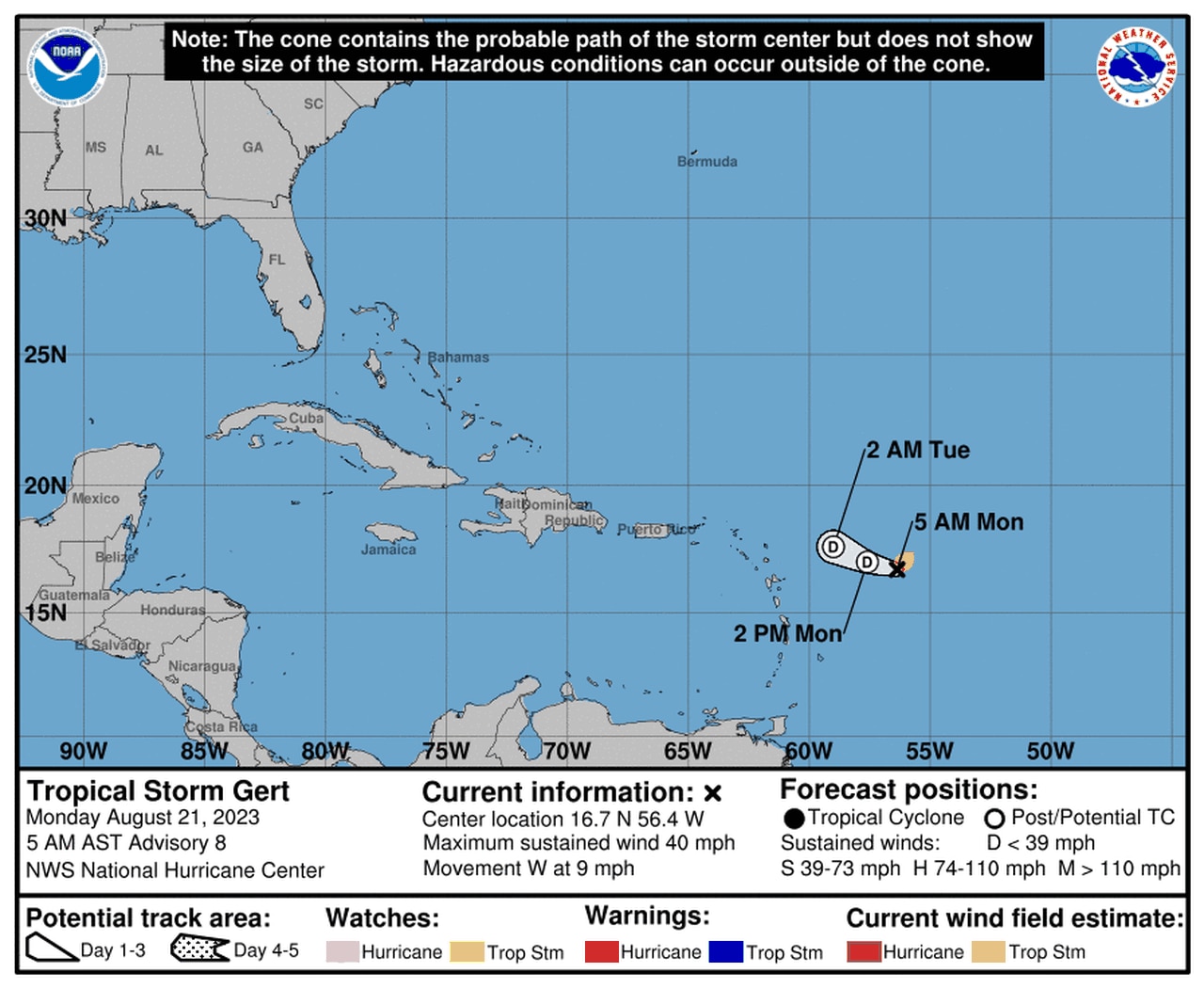
Gert is expected to be short-lived storm.
Tropical Storm Gert formed late Sunday from what was Tropical Depression Six.
Gert was expected to fall apart quickly and is no threat to land.
As of Monday morning Gert was located about 455 miles east-southeast of the northern Leeward Islands and was moving west at 9 mph.
Gert had winds of 40 mph, making it a minimal tropical storm. The hurricane center expects Gert to become a remnant low today and dissipate on Tuesday.
ELSEWHERE IN THE ATLANTIC
Far to the east of the rest of the storms is Invest 92, which was closer to the coast of Africa on Monday. The hurricane center said it was in a good area for development and could become a tropical depression later this week as it tracks to the west-northwest. It was no immediate threat to land.
The tropical Atlantic is now in what is typically it’s busiest stretch, with the climatological peak of the season arriving on Sept. 10.
The 2023 hurricane season runs until Nov. 30.
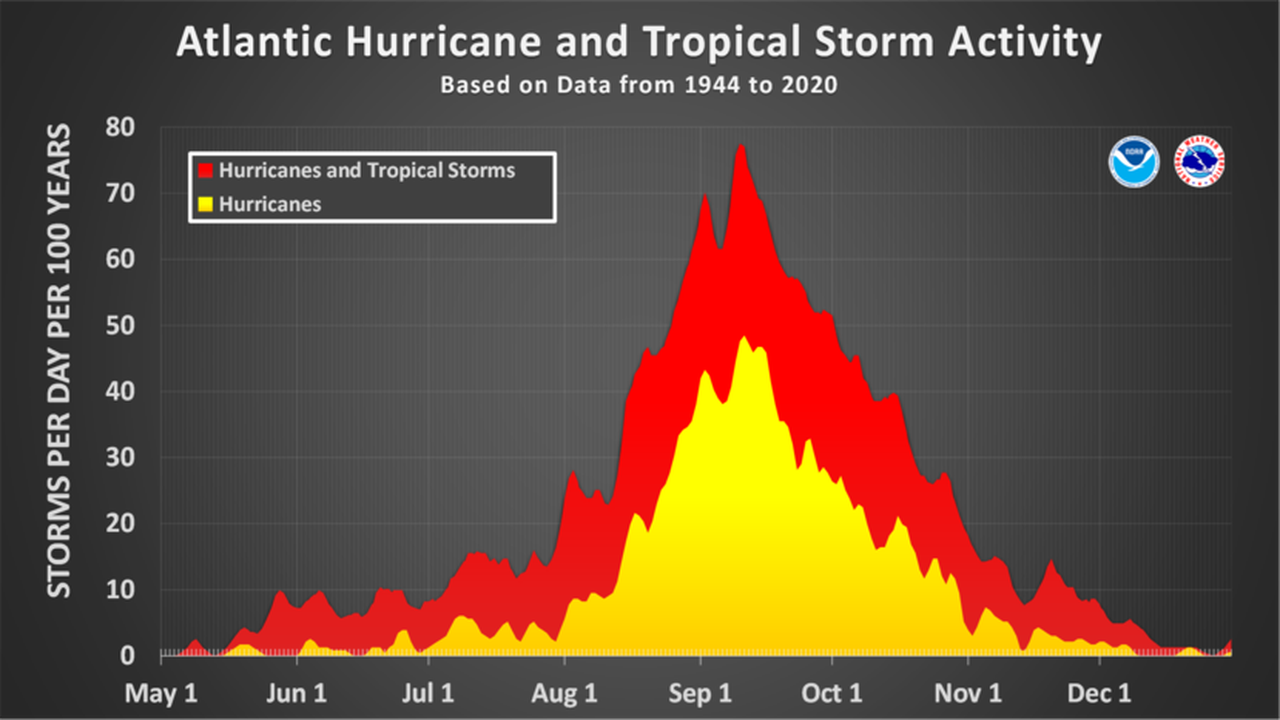
The Atlantic hurricane season typically peaks in September.
